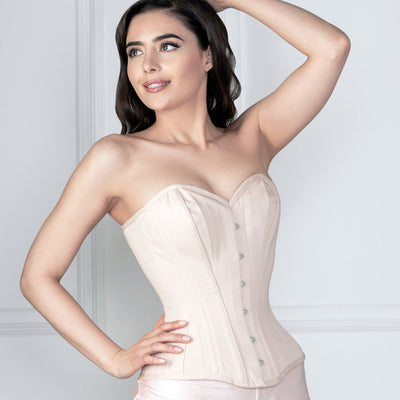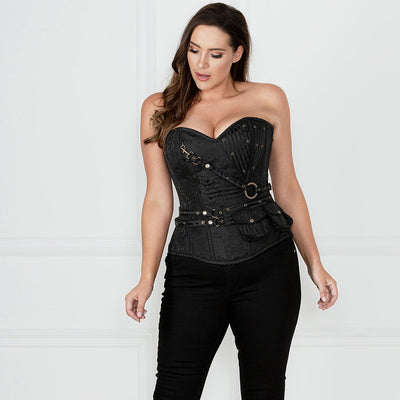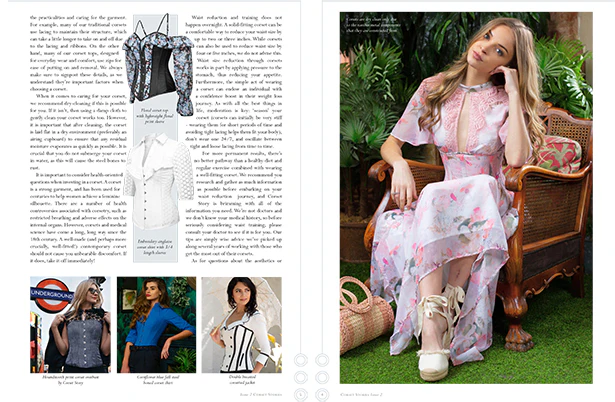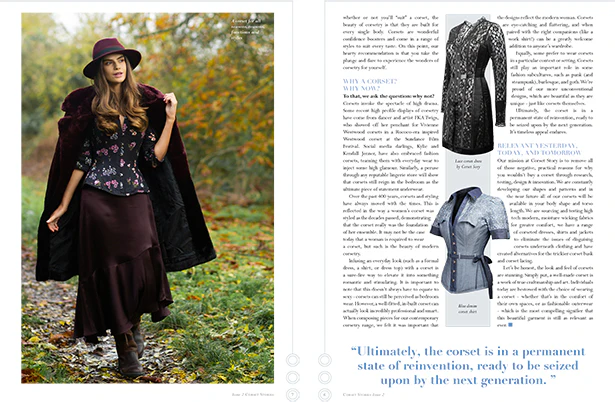The Full Guide to Corset Vocabulary
Whether you’re new to corsets or you just need a recap, everything you need to know about corset vocabulary and terminology can be found here...
Unless you’ve been wearing corsets for years, there are various terms, names and phrases that you might not be familiar with. While we aim to use wording that clearly explains the different features of our corsets, if you plan on wearing a corset more frequently, or even from time to time, it’s well worth taking the time to understand the corset lingo. This will help you make informed decisions, and also generally make navigating the corset world that little bit easier.
Here’s the full guide to corset vocabulary, including all of the names and terms that you need to know surrounding corsetry…
The Corset Dictionary
Lacing: Lacing refers to the cords that are used to tighten the corset and create the waist reduction you desire. Laces are typically placed at the back of a corset, but it can be at the front or both the back and front too. The laces are used to pull the panels of the corset together, to create the shaping effects and an hourglass shape. As laces are usually tightened behind the back, they can be a little tricky to do up to start with, but you can easily master this with a little practice.
Overbust Corset: The term ‘overbust’ is pretty self explanatory, in that it sits over the bust, coming up high enough to cover the breasts and/or bra. Overbust corsets typically have a built-in bra, meaning you don’t usually need to wear a bra alongside your corset. This style corset is typically strapless, but some overbust styles will have sleeves or straps, particularly in the case of overbust corset tops.
Underbust Corset: Just like the overbust, an underbust is also self explanatory. This style corset stops right under the bra line, and is traditionally worn with a bra. Underbust corsets are ideal for wearing under clothing when you want to be discreet and will offer the same great wait reduction as an overbust.
Corset Top: Corset tops provide instant shape and are designed to be worn for everyday purposes, not just for performance or special occasions. Unlike underbust corsets which are usually worn under clothing and concealed, corset tops are worn as tops, but still provide great shaping and a 2 inch waist reduction. Corset tops come in a number of styles, but are usually overbust designs, and can be strapless, have straps or off the shoulder sleeves.
Grommets: This refers to the round metal pieces that are added to the corset to strengthen the lacing holes. The grommets ensure your corset sits flat and neatly once laced, rather than bunching up the material, as well as ensuring your corset doesn’t rip when you tighten your laces.
Modesty Panel: The modesty panel is a piece of fabric that sits underneath your lacing. This will prevent any friction burns to your skin while you are tightening your corset. The modesty panel is also sometimes called a lacing guard. In some designs you will also find a small modesty panel under the busk (see further down the list) too.
Waist Training: This is the term that is used when referring to using a corset semi- permanently change your shape. Waist training is carried out to reduce the size of the waist, so that it remains smaller even when not wearing a corset. Waist training can be done using a normal corset, or a waist trainer, and needs to be worn for long periods of time to achieve the desired outcome.
Waspie: Waspies are essentially underbust corsets but shorter. They can also be known as waist cinchers or belt corsets, and they sit around the waist to provide an effective reduction. Waspies are usually worn under your clothing, but can be worn on top as a statement piece.
Channels: The channels of a corset are what keeps the boning secure and in place. Channels are sewn into the fabric of the corset and the boning is inserted into the channels. This will help ensure that your corset keeps its shape and good strong channels will help it last longer too.
Binding: This refers to the piece of material that covers the bottom or top edge of your corset. Binding provides extra security for the boning and covers the side where the boning slides in. This will help keep the boning in place and ensure it doesn’t poke out and dig into your skin, for maximum comfort.
Busk: The busk of a corset refers to the front opening. This is usually made from two steel bones along with a row of hooks to allow you to close the front of your corset with ease. Not all corsets feature a busk, but generally most styles do include this helpful feature.
Boning: Boning refers to the rigid pieces that slot into the channels to provide the corset with structure. The boning helps keep the shape of your corset and helps with the waist reduction. Traditional boning was made from whale bone, hence the name, but today high quality corsets usually use steel boning, and cheaper corsets use plastic boning.
Now that you fully understand the names and terms related to corsetry, you will be better equipped to make informed decisions when it comes to choosing the right corset for you.






